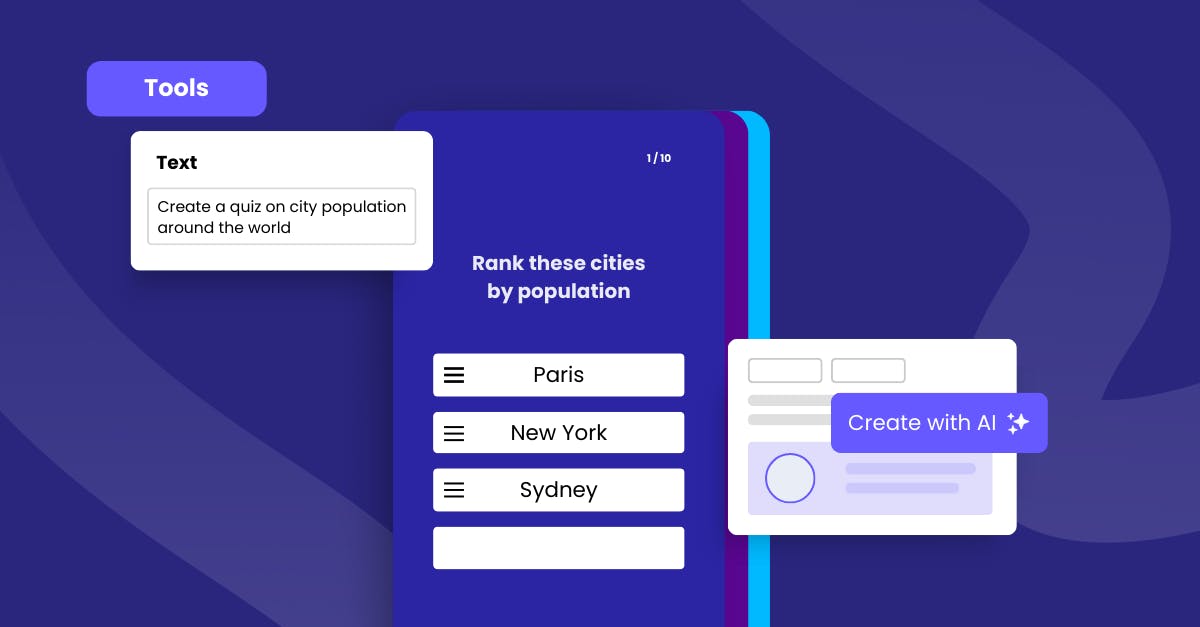10 Challenges of AI (and how to solve them)

Artificial intelligence (AI) is driving great advancements in technology, from self-driving cars to personalized virtual assistants. But its rapid expansion is not without hurdles.
In this article, we’ll tackle the different challenges that AI faces today. More importantly, we’ll also explore innovative solutions and strategies for overcoming these obstacles.
So let’s unravel the challenges of AI and find the answers to the pressing questions that’ll shape its future.
What are the advantages of using AI?
Here are the most common benefits of artificial intelligence in various fields:
Automation
AI automates repetitive and time-consuming tasks. As this reduces human intervention, it also increases efficiency. This leads to cost savings, improved productivity, and the ability to allocate human resources to more strategic and creative tasks.
Consider that numerous AI tools lack the capability to autonomously gather data from websites. For automating web data extraction, it is advisable to seek assistance from a web scraping service to acquire the necessary data. Subsequently, you can employ AI for the analysis of the collected information.
Data Analysis
AI excels at processing and analyzing vast amounts of data quickly and accurately. This capability allows organizations to extract valuable insights, make data-driven decisions, and identify patterns that may not be apparent to humans at first glance.
Personalization
AI delivers personalized experiences and recommendations to individual users. We can see this in personalized content, product recommendations, and learning paths in elearning. It gives tailored and relevant experiences to users by providing AI answers to people's questions.
Personalization with AI truly shines when it comes to its uses in training. With this, businesses and organizations are able to customize their training based on the needs, preferences, and skill levels of their members or employees.
As an AI-based LMS, SC Training (formerly EdApp) employs AI-driven reporting and analytics to track learners’ progress. These also help to make sure that they’re getting the training they need according to their role and preferences.
The platform also offers Create with AI, a course creation tool that simply asks for a prompt such as a course title or topic. Then it does the rest of the work to create an informative and interactive lesson that’s sure to engage learners.
Sign up for SC Training (formerly EdApp) and enjoy all the wonders of using AI for your company training.
Improved Customer Service
AI-driven chatbots and virtual assistants offer 24/7 customer support, answer common queries, and enhance the customer experience. They can even handle routine inquiries, freeing up customer service agents for more complex issues.
Healthcare Advancements
AI plays a crucial role in medical diagnosis, drug discovery, and treatment planning. It can analyze medical images, predict disease outcomes, and assist healthcare professionals in making more accurate and timely decisions. All in all, this improves patient care and outcomes.
All of these advantages show the practical use of AI in many industries. Still, it's always important to consider the challenges of AI such as its ethical and societal implications as it continues to be integrated into these different fields.
10 Challenges of using AI
Data Quality and Availability
There’s a need for extensive, unbiased, and high-quality datasets for effective AI model training. Making sure that AI models are built upon datasets that are both representative and free from bias is a top priority for responsible and effective AI development.
To guarantee the relevance and reliability of data, organizations that use AI should have a robust data collection process that accommodates most, if not all of the following:
- Diverse data sources
- Data augmentation techniques
- Rigorous labeling and annotation
- Bias detection and mitigation
- Transparency and continuous monitoring
- Open data initiatives
- Partnerships with external organizations
- Active collaboration between experts
Bias and Fairness
AI systems have the potential to perpetuate or exacerbate biases present in their training data. This results in unfair or discriminatory outcomes, particularly in domains like hiring, criminal justice, and lending.
In general, addressing the challenges of AI needs an approach that combines technical, ethical, and regulatory measures to build more unbiased and fair AI systems. Here are some suggestions:
- Technical measure: Implement strong bias detection techniques during both the data collection and model training stages.
- Ethical measure: Employ diversity and inclusivity in development teams to reduce bias and promote fairness in AI system design.
- Regulatory measure: Develop ethical guidelines and regulatory standards for AI applications.
Transparency and Explainability
Many AI models, especially deep learning models, are often considered "black boxes". This means that it’s difficult to understand their decision-making processes. Still, this understanding is essential for trust and accountability.
So, a way to solve this problem of AI is to invest in research and the development of explainable AI (XAI) techniques that offer insights into model predictions. This’ll let users understand the factors influencing AI decisions.
We could also encourage AI models that prioritize transparency and accountability by design, alongside regulatory standards that require explainability in critical applications.
If we can promote the use of simpler, interpretable models and clear documentation of model architectures and training data, we can further enhance transparency and foster ethical AI.
Ethical Concerns
The use of AI raises ethical dilemmas such as privacy, surveillance, and the potential for misuse. This means that there’s a need to establish comprehensive guidelines and frameworks to guarantee the ethical use of AI.
One solution for this AI issue is to prioritize ethical considerations in AI development. Transparency, fairness, and accountability should be emphasized throughout the entire AI lifecycle, from data collection to delivery.
Interdisciplinary collaboration between technology experts, ethicists, policymakers, and stakeholders should also facilitate the creation of regulatory standards that govern AI usage. This collaboration can guarantee AI’s alignment with societal values and fundamental rights.
Continuous public engagement and awareness campaigns also underscore the importance of ethical AI practices and the consequences of misuse. With collective efforts, we can successfully deal with all of these artificial intelligence problems and solutions.
Regulation and Governance
Determining responsibility for AI system decisions and actions is complex, especially in cases of system errors or misuse. To address this, establishing a clear legal and regulatory framework for AI applications is vital.
The roles and responsibilities of developers, operators, and users must all be defined. This includes implementing transparency requirements, setting up regulatory bodies, and setting up industry standards for ethical and safe AI use.
With international cooperation for the standardization of AI regulations, global challenges can be addressed. Plus, continuous monitoring, compliance audits, and reporting mechanisms can make sure that people are following AI governance guidelines.
Also, integrating accountability and liability considerations into AI development processes can promote responsible AI innovation while addressing concerns related to regulatory enforcement.
Security and Robustness
AI systems can be vulnerable to malicious attacks, where slight modifications to input data can lead to incorrect results. This is why the security and robustness of AI models is a critical concern.
To mitigate this challenge, a multi-faceted approach is needed. Possible solutions to fortify the security and robustness of AI models against adversarial threats include the following:
- Advancing research in adversarial training techniques where AI models are trained to resist such attacks
- Developing intrusion detection systems specifically designed to identify malicious activities targeting AI
- Employing encryption methods to protect sensitive AI models and data
- Securing data storage and transmission
- Rigorous testing and validation of AI systems under a variety of conditions
- Continuous monitoring for anomalies
- Collaborating with cybersecurity experts
- Adopting best practices for secure AI development
International Cooperation
As previously mentioned, AI development is a global endeavor, and international collaboration is necessary to address ethical, regulatory, and security challenges effectively.
International agreements and alliances must be established to facilitate knowledge-sharing, standardization, and harmonization of AI principles and policies.
Cross-border research collaborations, data exchange, and coordinated efforts in setting ethical standards and regulatory guidelines should be encouraged. These can foster a more unified approach to AI development and governance.
International organizations or forums dedicated to AI discussions can collectively address global challenges, guaranteeing responsible and beneficial AI worldwide.
Job Displacement
Automation and AI technologies have the potential to replace certain jobs, which can lead to workforce disruptions. Potential solutions include investing in robust training programs that focus on reskilling and upskilling workers to adapt to changing job requirements.
Governments, businesses, and educational institutions can collaborate to identify emerging job sectors and promote lifelong learning. They can also support affected workers through financial assistance and career transition programs.
AI development efforts should also shift toward creating technologies that augment human capabilities rather than replace them. In turn, this promotes the development of new roles and opportunities. For example, students are hampering their own creativity and writing skills by using an AI essay generator to fully do the work for them. Instead, they could use AI to help with researching relevant information and refining their essays with correct grammar.
By doing this, we can take advantage of AI as a tool to enhance productivity and innovation while safeguarding job stability and economic resilience.
Human-AI Interaction
Creating seamless and effective user interfaces for humans to interact with AI systems, such as chatbots or autonomous vehicles, is an ongoing challenge. This challenge highlights the need for intuitive and efficient platforms that facilitate smooth collaboration between humans and AI.
User-centric design, natural language processing, and user-friendly interfaces can make AI technology accessible to a broad audience.
Developing AI systems that can understand and adapt to human preferences and context is crucial. This requires advancements in human-computer interaction and personalization techniques.
Extensive user testing and feedback loops can also help refine AI interfaces. An added benefit is fostering user confidence in the technology.
Energy Consumption
Large AI models can have a substantial carbon footprint due to their energy consumption, which raises environmental concerns. But AI models and hardware can be improved for energy efficiency, with a focus on developing more power-efficient algorithms and architectures.
Transitioning to renewable energy sources for AI infrastructure and data centers can also significantly reduce the carbon footprint associated with AI technology.
Plus, considering trade-offs between model size and environmental impact and adopting model compression techniques can help strike a balance between performance and sustainability.
A holistic approach to addressing energy consumption challenges in AI requires innovation, industry-wide commitment, and eco-friendly practices to minimize its environmental footprint.
Author
Donna Dane
Donna is an elearning content writer for SC Training (formerly EdApp), a mobile-based microlearning platform designed for today's digital training needs. When she's not writing web articles, she writes lines of code or songs or anything food-related.
